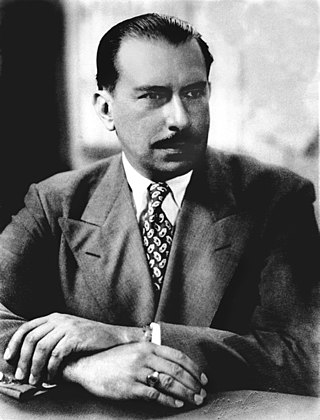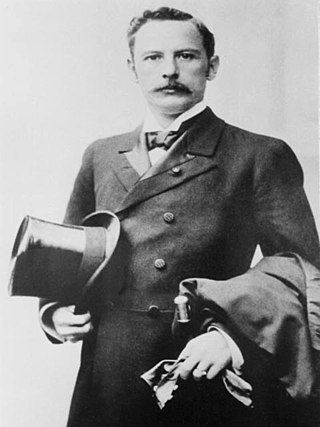
Teodoro Picado Michalski was the president of Costa Rica for four years.

Rafael Anselmo José Iglesias Castro, also known as Rafael Yglesias was a Costa Rican politician who served as President of Costa Rica for two consecutive periods from 1894 to 1902.

The University of Costa Rica is a public university in the Republic of Costa Rica, in Central America. Its main campus, Ciudad Universitaria Rodrigo Facio, is located in San Pedro Montes de Oca, in the province of San José. It is the oldest and largest institution of higher learning in Costa Rica, originally established as the Universidad de Santo Tomás in 1843. It is also the most important research university in the country and Central America and is counted among the most prestigious universities of Latin America. Approximately 45,000 students attend UCR throughout the year.

San Marcos is a town and a municipality in the Carazo Department of Nicaragua. It is located 45 km (28 mi) south of the capital Managua. The municipality has a population of 33,303.

The Costa Rican Civil War took place from 12 March to 24 April 1948. The conflict began after the Legislative Assembly of Costa Rica, dominated by pro-government representatives, voted on 1 March 1948 to annul the results of the presidential elections of 8 February, alleging that the triumph of opposition candidate Otilio Ulate over the ruling party's Rafael Ángel Calderón Guardia had been achieved by fraud. This triggered an armed uprising led by José Figueres Ferrer, a businessman who had not participated in the elections, against the government of President Teodoro Picado.

Jorge Eduardo Allende Rivera, is a Chilean biochemist and biophysicist known for his contributions to the understanding of proteic biosynthesis and how transfer RNA is generated, and the regulation of maturation of amphibian eggs. He has been a foreign associate of the United States National Academy of Sciences since 2001, and was awarded the Chilean National Prize for Nature Sciences (Chile) in 1992.

Vázquez de Coronado, and commonly known just as Coronado, is the eleventh canton in the province of San José in Costa Rica. The head city of the canton is San Isidro.
Atropoides picadoi, also known as Picado's jumping pitviper, is a species of venomous snake, a pitviper in the subfamily Crotalinae of the family Viperidae. The species is endemic to Costa Rica. There are no subspecies that are recognised as being valid. It is monotypic in the genus Atropoides.
"Felix, qui potuit rerum cognoscere causas" is verse 490 of Book 2 of the "Georgics", by the Latin poet Virgil. It is literally translated as: "Fortunate, who was able to know the causes of things". Dryden rendered it: "Happy the Man, who, studying Nature's Laws, / Thro' known Effects can trace the secret Cause".

Manuel María de Peralta y Alfaro was a Costa Rican diplomat and historian. De Peralta y Alfaro was born in Taras, Cartago, Costa Rica, on July 4, 1847. He was the only Costa Rican to ever be given the designation of "Hero of the Motherland" twice.
The history of the Jews in Costa Rica dates back to the Spanish conquest with the arrival of many Sephardic converts known as Marranos who escaped from the Spanish Inquisition and settled mainly in the city of Cartago and its surroundings. They hid their Jewish past by all means, making even their descendants have no idea of it.

Rafael Ángel "Felo" García Picado is a Costa Rican painter, architect, and former footballer.
The Cabécar language is an indigenous American language of the Chibchan language family spoken by the Cabécar people in the inland Turrialba Region, Cartago Province, Costa Rica. As of 2007, 2,000 speakers were monolingual. It is the only indigenous language in Costa Rica with monolingual adults. The language is also known by its dialect names Chirripó, Estrella, Telire, and Ujarrás.
The Instituto Clodomiro Picado is a research center in Vázquez de Coronado, San José Province, Costa Rica. Established in 1970, the institute is a research unit of the Universidad de Costa Rica, responsible for the production of snake antiophidic serums and scientific research on serpents and their venoms, as well as educational and extension programs in rural areas and hospitals. It received its name in honor of Costa Rican scientist Clodomiro Picado Twight.

The Academia Nacional de Ciencias is Costa Rica's Academy of Sciences. It was created as a “permanent forum for discussion and scientific analysis,” and serves both as an honorific society and a source of scientific advice for the government. Its mandate is to promote scientific culture and progress within Costa Rica, and collaboration between national and international agencies. It maintains membership in international organizations such as the International Council for Science (ICSU), the InterAmerican Network of Academies of Sciences (IANAS) and the Third World Network (TWN). Its headquarters are in San Pedro in the province of San José.

Víctor Iván Vargas Blanco is Costa Rican plasma and nuclear fusion physicist. He is renowned for his work in plasma physics and nuclear fusion. Currently, as a professor and tenured researcher at the Costa Rica Institute of Technology, he heads the Plasma Laboratory for Fusion Energy and Applications that he founded in 2011.

The Founding Junta of the Second Republic was a de facto government which existed in the Republic of Costa Rica from May 8, 1948, to November 8, 1949, with the overthrow of the constitutional president Teodoro Picado Michalski, by a group of revolutionaries headed by José Figueres Ferrer.
José María Gutiérrez is a Costa Rican toxinologist known for his work with animal venoms and development of antivenoms. He won the Redi Award, the highest honor conferred by the International Society on Toxinology in 2017 for his work.













